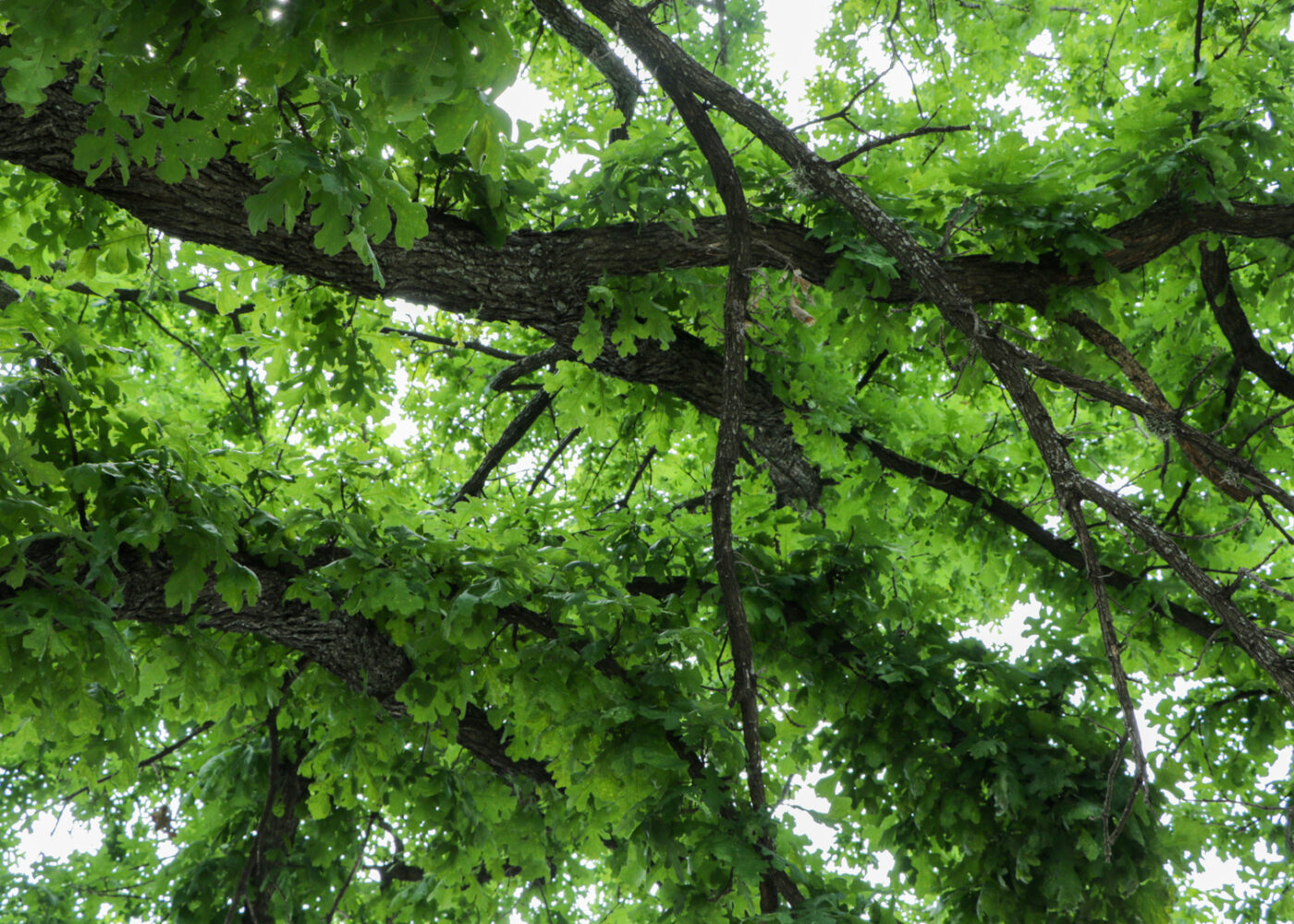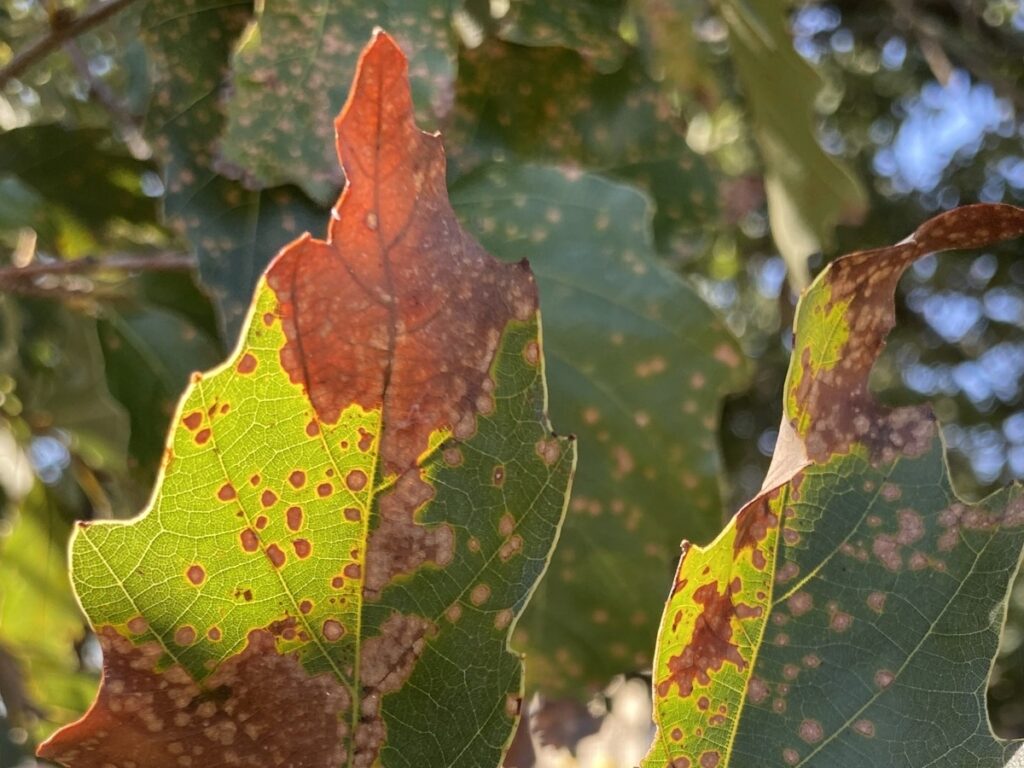The most common and easily noticeable diseases of oak trees is leaf fungi known as leaf spots. These fungi infect the leaves, and in some cases the twigs and buds, of oak trees causing discoloration, spotting, and loss of leaves.
Several fungal species cause leaf spots. Some of the most common are Tubakia, Anthracnose, tar spot, oak leaf blister, and oak rust. These diseases have a lot in common including the ways that they spread, the damage they cause, and how we control them.
Repeated outbreaks of leaf spots, particularly in combination with other stresses, can lead to tree health decline over time.
Spread
Fungi reproduce and spread through spores. In most foliar fungi, these spores can wait through winter in the leaf litter that has gathered beneath an infected tree. During spring, rain and wind can disturb the spores, transporting them onto fresh leaves causing a new infection.
Because there is more shade and moisture in the lower canopy, most of these diseases are often noticed first in the lower branches of the tree. They then slowly move up towards the crown.
Most fungi favor damp and warm environments, so infestations often peak in the summer following a wet spring. Infestations can vary from year to year depending on environmental conditions.
Signs and symptoms
Generally, leaf diseases will appear as orange, yellow, black, or brown spots on the surface or underside of the leaf. In some cases, these spots may turn into dead patches that spread over the entire leaf surface.
Deformity of the leaf itself may be associated with some of the diseases. In the most extreme cases loss of leaves can occur. Exact symptoms can vary depending on the species of oak and the type of infecting fungus.
- Anthracnose produces dead spots associated with veins and cupping or curling the leaves, with infections occurring in early spring.
- Tubakia is most severe in late summer and early fall. Spores hibernate through the winter in infected twigs and leaves and are spread by wind and rain-splashing. Leaf spots caused by Tubakia are circular and typically surrounded by a yellow halo. A dead streak can be seen when a spot reaches a leaf vein and expands very quickly.
- Oak leaf blister spores hibernate through winter on the bud and infest new leaves during cool and moist conditions at the point when new leaves start growing. Oak leaf blister produces abnormal growth of the leaf, such as cupping and twisting.
- Tar spot typically occurs in early summer or in the fall, producing black, blotchy lesions on the upper side of leaves.
- Oak rust produces yellow pustules with spores under the leaves in late springs favored by high humidity. Oak rust spores, which infect both pine and oak, are mainly carried by wind.
Prevention and control
The damage caused by leaf diseases does not usually cause major harm to the tree, so extreme control efforts are usually not called for.
The first step in control of leaf diseases is cleaning the tree by removing infected leaves to break the disease cycle, which stops re-infection of new leaves. Infected leaves and twigs should be raked as they fall and disposed of in the trash or by burning. These leaves should not be composted or stored on site as this may let the fungus continue to spread.
Cultural practices, such as correct watering practices, proper tree spacing, and pruning to improve air movement and light passing through the leaves, will reduce the impact of leaf diseases.
Proper watering practices are crucial. If the tree is overwatered, or if water pools in the area, it can form an environment for fungi to flourish. Similarly, trees should be watered at the base to not splash the leaves.
If an infection occurs repeatedly, it may be necessary to prune lower branches, and thin the canopy to help with air movement and removal of the spores.
Under the most extreme circumstances where other control measures fail, and when disease pressure is high, it may be necessary to apply a leaf fungicide. Fungicides are applied to buds and leaf surfaces prior to symptoms appearing. Often fungicides will need to be applied in the early spring, and in some cases periodically throughout the growing season.
Some common fungicides used in the control of leaf diseases include chlorothalonil and propiconazole. Check manufacturer labels to identify a product that is allowed for use treating your specific disease in oak trees.
Since these products must be applied to the entire canopy of the tree, and require proper diagnosis of the fungus, it is usually necessary to hire a Certified Arborist.

